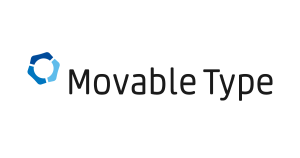Choosing the right content management system requires careful consideration of your specific needs, technical requirements, and long-term goals. While newer platforms often grab headlines, Movable Type’s mature feature set and proven track record make it a compelling choice for many publishing scenarios.

The Stability Advantage
Movable Type’s greatest strength lies in its stability and reliability. Having been in continuous development since 2001, the platform has weathered numerous technological changes and evolved to meet modern web standards while maintaining backward compatibility. This maturity translates into fewer unexpected issues and more predictable behavior, crucial factors for professional publishing operations.
Unlike some newer platforms that undergo frequent major changes, Movable Type’s development philosophy emphasizes incremental improvements and long-term stability. This approach reduces the risk of breaking changes that could disrupt established workflows or require extensive redevelopment.
Static Publishing Benefits
In an era where website performance directly impacts search rankings and user experience, Movable Type’s static publishing capabilities provide significant advantages. By generating actual HTML files rather than dynamically creating pages on each request, static publishing delivers faster loading times and reduces server resource requirements.
This approach also enhances security since there’s no database connection required for page delivery, eliminating entire categories of potential vulnerabilities. For content that doesn’t change frequently, static publishing offers an elegant solution that many modern platforms struggle to match.
Professional Publishing Focus
While many contemporary CMS platforms try to be everything to everyone, Movable Type maintains a laser focus on publishing excellence. Features like comprehensive revision history, scheduled publishing, automatic unpublishing, and sophisticated content organization reflect deep understanding of professional publishing workflows.
The platform’s multi-site capabilities are particularly noteworthy, allowing organizations to manage numerous websites and blogs from a single installation while maintaining distinct identities and configurations for each property. This centralized management approach simplifies administration while preserving flexibility.
When to Choose Movable Type
Movable Type excels in scenarios where stability, security, and publishing sophistication are paramount. News organizations, corporate communications teams, and established bloggers who prioritize reliability over cutting-edge features often find Movable Type’s approach refreshing.
The platform is particularly well-suited for organizations with complex publishing workflows, multiple content contributors, or strict security requirements. Its enterprise features, including LDAP integration and database flexibility, make it viable for large-scale deployments where other platforms might struggle.
Considerations and Trade-offs
However, Movable Type may not be ideal for every situation. Users seeking extensive plugin ecosystems, modern visual page builders, or the latest social media integrations might find other platforms more suitable. The learning curve can also be steeper than some alternatives, particularly for users without technical backgrounds.
The platform’s Perl foundation, while stable and secure, means fewer developers are familiar with customization compared to PHP-based alternatives. This could impact long-term maintenance costs and availability of third-party services.
Making the Decision
Ultimately, choosing Movable Type depends on prioritizing proven reliability and publishing excellence over trendy features and extensive third-party ecosystems. For organizations where content is king and stability is non-negotiable, Movable Type’s mature approach offers compelling advantages that newer platforms are still working to achieve.